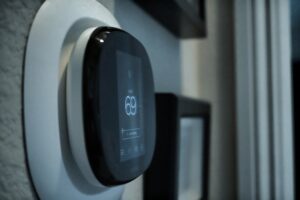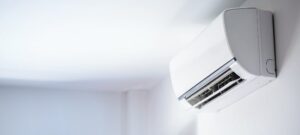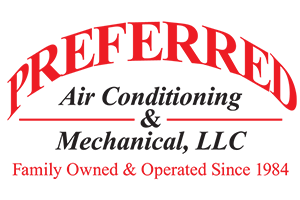Boost Energy Efficiency With Home Improvement Projects
In the Palm Beach, Florida, area our weather is definitely envied, except of course, when the hot weather hits. Taking steps to improve home energy efficiency helps you get greater benefits from your air conditioner. Many of these steps are affordable home improvements you can complete in no time. For others, working with a cooling expert will get you the best results.
The Attic
If you haven’t yet decided where to begin your home energy efficiency improvements, consider putting the attic at the top of your list. The summer sun beating down on the roof quickly raises the temperature in the attic. Without enough insulation to slow it down, all that accumulated heat will radiate into your air-conditioned rooms, making it harder keep your home cool.
Air leaks are the biggest source of heat transfer to and from the attic, so start your home energy efficiency improvements by sealing these leaks. You’ll find them around:
-
The attic hatch
-
Where the attic walls meet the floor
-
Around penetrations for wiring, pipes, and appliance vents
-
Dropped soffits over areas of dropped ceiling
-
Recessed lighting
The largest attic air leaks should be sealed first. Gaps of between 1/4 to 3 inches can be sealed with closed-cell polyurethane foam spray insulation. Gaps larger than this can be stuffed with fiberglass insulation before sealing. For cracks of 1/4 inch or less, acrylic latex caulk or another all-purpose caulk is usually enough. To seal metal surfaces, such as the flashing around the furnace flue, silicone caulk is a better choice.
Once you’ve air sealed thoroughly, consider boosting your attic insulation level. Your contractor will be able to determine what type and just home much insulation will be needed.
Laying fiberglass batts in the attic is a relatively easy DIY option for improving your home energy efficiency. Loose-fill (blown-in) cellulose insulation is another possible choice. This product is made of small pieces of insulation that fill cracks and crevices more thoroughly than batts, creating a more efficient heat barrier. To install it, however, you’ll need a blower machine.
Improve Ducts for More Efficient Cooling
Your home’s air ducts are a critical part of the HVAC system. Because the furnace and A/C depend on the ducts to distribute conditioned air, duct problems reduce the efficiency of the entire system. By improving ducts, you’ll enjoy more even, comfortable temperatures throughout your home, as well as lower energy bills.
Air leaks are the number one way ducts lose energy. Cracks, gaps, and holes in the ducts let heated air escape in winter and let out air conditioned air in summer, raising the demand on your heating and cooling system.
These duct leaks also let in air contaminants such as dust, mold spores, fumes from stored chemicals, and even insulation fibers. In winter, warm air escaping from your ducts into the attic, crawl space or another unconditioned area can cause condensation that leads to rot and mold growth.
To stop ducts from leaking, ensure all ductwork connections fit tightly together. This includes connections to the air handler and registers, as well as between sections of ductwork. Then seal these connections with mastic. Consult a heating and cooling technician who can bring equipment to assess the extent of the duct leakage and check for debris buildup.
Uninsulated ducts that run through unconditioned spaces can lose energy. For example, in winter, a cold attic will cool down the heated air in the ducts so less warmth reaches your rooms. Boost duct efficiency by insulating them with a layer of duct wrap insulation or fiberglass batts.
Let Walls Surround You With Comfort
The walls of your home could be reducing your home’s energy efficiency in the same way as leaky doors and windows. Walls can leak air from many points, including:
-
Crown molding and baseboards
-
Electrical outlets and switches
-
Penetrations for utility lines
-
Penetrations for exhaust fans and appliance vents
You can find these leaks the same way you find leaks around doors and windows, then use caulk to seal leaks of 1/4 inch or smaller. Foam spray insulation can be used for leaks of 1/4 to 3 inches.
Even if well-sealed, walls can still cause your home to lose or gain heat if they’re not well insulated. Because assessing the insulation in your walls is difficult without special equipment, consider contacting a heating and cooling technician for a home energy audit.
During an energy audit, the technician will take infrared photos of your home to find areas of heat loss that would benefit from more insulation. Using loose-fill insulation will let you add needed insulation to your walls without having to open large sections of walls.
Improving Energy Efficiency in the Basement and Crawl Space
Upgrading your basement and crawl space will not only improve your home’s total home energy efficiency but also keep the floors warmer in winter. In the basement, your first step is to seal leaks as you did in the rest of your house. Penetrations for utility lines and appliance vents are frequent sources of air leaks in the basement.
The next step is to insulate the rim joists at both ends of the basement. Cut rigid foam insulation into strips, then into sections that will fit against the rim joists between the floor joists. Finally, apply caulk to the edges of each section of rigid foam to seal them into place and prevent air leaks.
For insulating crawl space walls, rigid foam insulation is one of the best options. This type of insulation helps control the humidity issues that often occur in crawl spaces. Once you’ve insulated the walls, lay a sheet of polyethylene on the crawl space floor and part-way up the walls to create a vapor barrier that further controls humidity. The plastic sheeting can be secured to the wall with foam spray insulation.
Contact Preferred Air Conditioning & Mechanical, LLC at (561) 202-1422 for more information about improving home energy efficiency.
Image provided by Shutterstock
You May Also Like

Learn More About the New HVAC System Restrictions
As of 2023, Florida has rolled out new regulations governing HVAC systems to address environmental concerns and improve energy efficiency across the… Continue Reading Learn More About the New HVAC System Restrictions…

What Makes a Smart Thermostat Screen Go Blank
A smart thermostat should display a lot of information on its screen that keys you into the state of your HVAC system… Continue Reading What Makes a Smart Thermostat Screen Go Blank…

Troubleshooting Your Ductless Heating System in Delray Beach, FL
Ductless heating systems can experience issues similar to other types of heaters, especially when neglected and not maintained. Let’s look into the… Continue Reading Troubleshooting Your Ductless Heating System in Delray Beach, FL…
